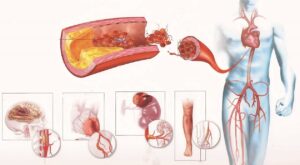SHARE WITH FRIENDS:
Signs of infection in the blood
Heating
Sepsis is manifested by a bacterial infection in the blood and the body reacts to it with a rise in temperature. In many cases, other symptoms may not be observed. If the body temperature does not fall for a long time, it is necessary to consult a doctor.
Decreased body temperature
When an infection enters the bloodstream, the temperature can not only rise but also fall. So this is a serious signal that should not be denied. Doctors warn that if the infection in the blood is manifested by a low temperature, treatment can be difficult and lead to bad consequences.
Trembling
In many cases, the shivering that accompanies a rise in temperature is in turn a symptom of blood damage. The reason for not being noticed during the medical examination is also that the patient should not forget to tell the doctor that he has trembling.
Pain in the body
One of the symptoms of blood damage, often confused with the flu or cold, is fever and chills. In sepsis, pain can be observed all over the body or in one part of the body. For this reason, do not forget to consult a doctor.
Decreased blood pressure
A drop in blood pressure is a symptom that is characteristic of blood damage and indicates that the infection has spread sufficiently to signal the onset of septic shock. In this case, the elasticity of blood vessels is lost.
Pulse acceleration
In sepsis, the body tries to speed up blood circulation to get rid of the infection. The number of heartbeats accelerates and the pulse rises to 90 beats per minute. This is why one should not be indifferent when this symptom is observed.
Shortness of breath
Shortness of breath observed at a rate of 22 breaths per minute is one of the typical symptoms of blood damage. The fact is that one of the most common causes of sepsis is inflammation of the lungs. Due to the lack of oxygen in the blood, the body tries to meet the need by accelerating respiration. Even if the infection is not in the lungs, the disease increases the body's need for oxygen and speeds up breathing.
Color whitening
When the blood is damaged, the blood in other organs decreases due to the body's protection of the brain and heart, which leads to pale skin.
Relaxation and drowsiness
In most cases, this symptom, which is characteristic of blood damage, can be observed mainly in the elderly, and sometimes also in young children.
@doridarmons
